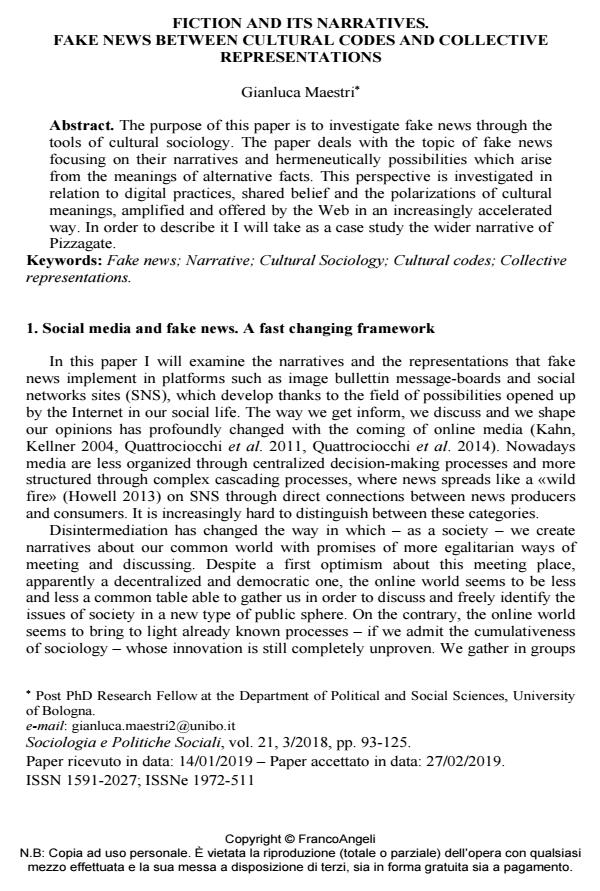Fiction and its narratives. Fake news between cultural codes and collective representations
Journal title SOCIOLOGIA E POLITICHE SOCIALI
Author/s Gianluca Maestri
Publishing Year 2019 Issue 2018/3
Language English Pages 33 P. 93-125 File size 334 KB
DOI 10.3280/SP2018-003006
DOI is like a bar code for intellectual property: to have more infomation
click here
Below, you can see the article first page
If you want to buy this article in PDF format, you can do it, following the instructions to buy download credits

FrancoAngeli is member of Publishers International Linking Association, Inc (PILA), a not-for-profit association which run the CrossRef service enabling links to and from online scholarly content.
The purpose of this paper is to investigate fake news through the tools of cultural sociology. The paper deals with the topic of fake news focusing on their narratives and hermeneutically possibilities which arise from the meanings of alternative facts. This perspective is investigated in relation to digital practices, shared belief and the polarizations of cultural meanings, amplified and offered by the Web in an increasingly accelerated way. In order to describe it I will take as a case study the wider narrative of Pizzagate.
Keywords: Fake news; Narrative; Cultural Sociology; Cultural codes; Collective representations.
Gianluca Maestri, Fiction and its narratives. Fake news between cultural codes and collective representations in "SOCIOLOGIA E POLITICHE SOCIALI" 3/2018, pp 93-125, DOI: 10.3280/SP2018-003006